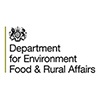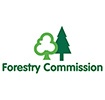
Protecting Oak Ecosystems: understanding and forecasting causes and consequences, management for future climates - PuRpOsE
Led by Professor Robert Jackson, University of Reading
Oaks are iconic trees in the UK and throughout much of Europe. Our two native oaks are species that members of the public recognise and which have considerable cultural, economic and biodiversity value. Indeed, we do not yet have the knowledge to understand health threats to oak or prepare for the likely reactions of wider stakeholders and the public. Pedunculate and sessile oak are widespread in the UK. Recently there has been an increase in non-native invasive pathogens and pests establishing in the UK and causing damage and/or death to many tree species. Oaks are under threat from several new pests and diseases, including Oak Processionary Moth (OPM) and Acute Oak Decline (AOD). For some of these, we do not yet understand how they cause decline in oak health and often there is no current treatment other than sanitation felling. We therefore urgently need to identify why trees are becoming more susceptible to pests and diseases and to develop management methods that would help reduce oak susceptibility. A decline in tree health and the potential loss or decline of oaks will have impacts on the plants, animals and humans that use oak trees and/or oak woods. Thus we need to assess the impacts of oak pests and diseases on the wider environment and how we can mitigate the impacts.
PuRpOsE is a research project to PRotect Oak Ecosystems through understanding and forecasting causes and consequences, and adaptation management for future climate projections. Our work to understand interactions between pests, diseases, environments and humans is led by a group of world-leading scientists who will address these issues. One focus of our work is AOD, but the outcomes of this study will provide valuable validation of approaches to other diseases and pests, such as OPM. Our work will increase our understanding of the causes of oak decline (particularly AOD) and determine the physiological and other phenotypic changes brought on by AOD infections and their impact on associated communities in the rhizosphere. We will produce risk maps and stress maps to identify climatic/soil regions where oaks are most at risk from AOD and from other pests and diseases, respectively. We will conduct a horizon scanning exercise, framed within the context of projected future climates, to identify potential new threats to oak health, the risk criteria and management options. Combining knowledge from risk mapping, stress mapping and horizon scanning, we will assess how forest management can reduce oak decline. Mitigation might necessitate replacement planting. Within PuRpOsE we assess tree species that could replace the function oaks have in the landscape in terms of biodiversity and ecosystem functions and the services associated with oak woodlands. Armed with the outputs of this research, we will identify adaptation strategies to reduce the impacts on biodiversity and ecosystem services such as carbon storage and water quality, engaging stakeholders in developing dynamic adaptive pathways for management and recreation from the loss of oak. Underpinning all of this work is a strong team commitment to working collaboratively across the natural and social sciences to understand tree health issues as involving pests and pathogens, hosts, environments and humans. The project aims to develop a common language to provide improved knowledge and understanding of health threats to native oaks, now and into the projected climate futures to decision-makers involved in tree health policy regulation, trade and forest policy and practice.
Project website: https://protectouroaks.wordpress.com/
This project is in partnership with Centre for Ecology & Hydrology, Forest Research, University of Oxford, The James Hutton Institute, Stockholm Environment Institute, University of York (project participants).
Specific objectives are to:
1. understand the causes of oak decline, particularly acute oak decline;
2. develop adaptation management strategies and identify future threats to oak;
3. assess the impacts of oak decline on biodiversity and ecosystem function/services and develop mitigation options; and
4. understand pest/pathogen, host, environment and human interaction and develop collaborative strategies for managing and living with Acute Oak Decline (AOD).






